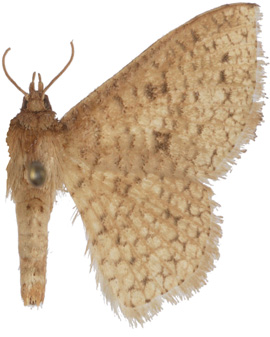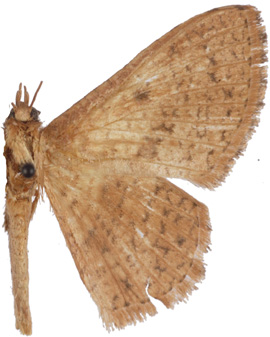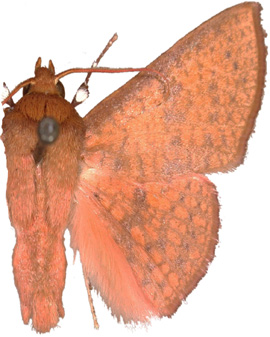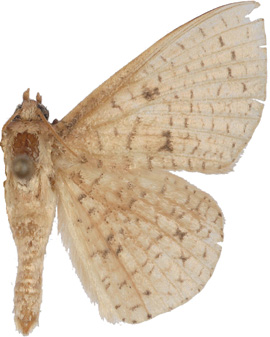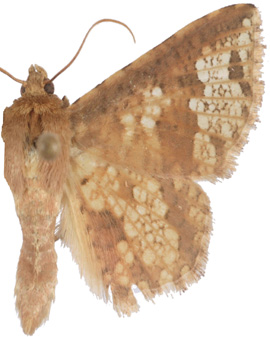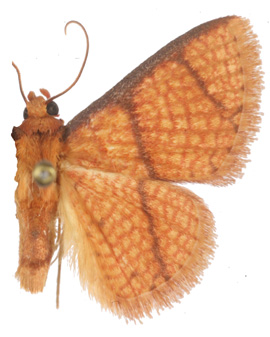Aglaopus
Scientific classification
Animalia > Arthropoda > Insecta > Lepidoptera > Ditrysia > Thyridoidea > Thyrididae > Striglininae > Aglaopus
Genus Aglaopus Turner, 1911
Type Species: niphocosma Turner (1911:98) from Australia (Port Darwin). This is a junior subjective synonym of floccosa (Warren, 1905a) (Striglina). Comb. n. to Aglaopus & syn. n. (Shaffer & Nielsen, 1996).
Syn. Cydrastis Turner (1915:27). Syn. n. (Shaffer & Nielsen, 1996).
Syn. Misalina Whalley, (1976:84). Syn. n. (Shaffer & Nielsen, 1996).
Generic Description: Eyes without interfacetal hairs. Antennae ciliate or minutely ciliate. FW with R4 + R5, HW with Sc + R1 & Rs free. Fore tibiae with epiphysis. Hind tibiae with two pairs of spurs and tarsi usually with rows of spines. Male with modified uncus, usually with a lateral process. Gnathos variously modified, never with peg-like teeth. Subscaphium with a large patch of modified scales. Female with double or triple frenulum. Ostium weakly sclerotised. Signum bursa if present usually small. (Whalley 1976: 84).
Aglaopus is a large genus of over 30 species. It ranges from Ethiopia to China and S. to Australia. Most species are Australasian with many in New Guinea (Whalley, 1976: 25, Map 5); (Common, 1990:341). Seven species occur in S.E Asia (RTS). Most are reddish or yellow-brown with distinct reticulated or speckled patterning. Often coarser reticulation may form a larger scale blotchy patterning in dark and pale browns. Whalley (1976: 84-86) gives a key to 23 species [as Misalina]..


